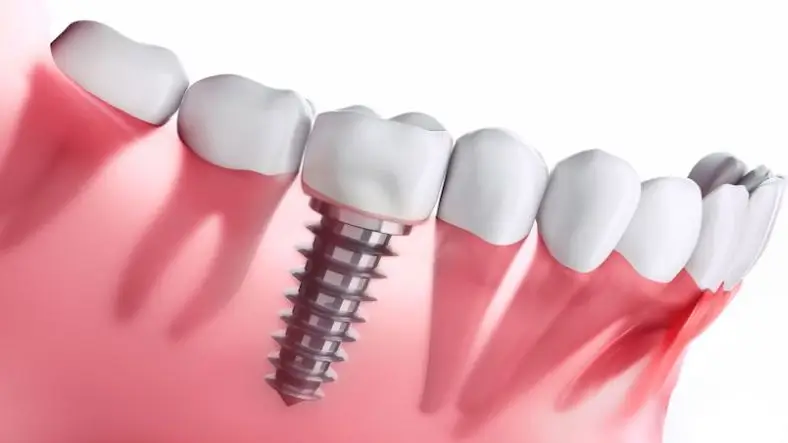Advancements in dental care across the globe have introduced modern solutions to age-old dental problems. One such revolutionary treatment is dental implants—a long-term, fixed solution for missing teeth that not only restores function but also improves overall health and facial aesthetics.
What is a Dental Implant?
- A dental implant is a medical-grade device designed to replace a missing tooth.
- It is surgically placed into the jawbone and acts as a strong foundation for a replacement tooth.
- Implants can support individual crowns, bridges, or even full dentures, and are known for their durability and natural appearance.
Google Ad 1
The Impact of Missing Teeth
Losing teeth isn’t just a cosmetic issue—it can affect your overall health and lifestyle:
- A person missing teeth on one side may start chewing only on the opposite side, which puts excessive pressure on the remaining teeth.
- This habit can lead to tooth wear, discomfort, and further tooth loss.
- Difficulty chewing can lead to a softer diet, reducing intake of essential nutrients.
- Over time, this can contribute to poor overall health and nutritional deficiencies.
Implant vs. Fixed Partial Denture (FPD)
Let’s compare Implants and Fixed Partial Dentures (FPDs)—also known as dental bridges:
| Feature | Implant | Fixed Partial Denture (FPD) |
|---|---|---|
| Bone Health | Promotes bone growth in the missing tooth area | May lead to bone loss under the Pontic (artificial tooth) |
| Adjacent Teeth | Does not require cutting or shaping nearby healthy teeth | Requires trimming of adjacent teeth to support the bridge |
| Longevity | Implants are highly durable with a long lifespan | FPDs may develop cavities or decay on supporting teeth over time |
| Aesthetics | Preserves natural facial structure | May not prevent bone loss, which can affect facial aesthetics |
| Success Rate | Around 97% over 10 years | Generally lower due to dependency on surrounding teeth |
Google Ad 2
Why Dental Implants Are the Best Choice
- Preserve Bone Structure
- Implants stimulate the jawbone just like natural teeth, preventing bone loss and facial collapse.
- After tooth loss, about 25% of bone width is lost within the first year, and vertical bone height can reduce by up to 4mm. Implants stop or even reverse this process.
- Maintain Facial Aesthetics
- Loss of bone can cause facial muscles to sag, resulting in premature wrinkles and an aged appearance.
- Implants help preserve the youthful contour of your face.
- Long-Term Solution
- Dental implants are designed to last for decades with proper care.
- Unlike dentures or bridges, they don’t need frequent replacement or repair.
- No Harm to Natural Teeth Implants function independently and don’t rely on adjacent teeth for support, preserving your natural tooth structure.
- Growing Popularity Among All Age Groups While younger people are increasingly opting for implants, they are equally effective for older adults who want a permanent, comfortable, and natural-looking solution for tooth loss.
Final Thoughts
Dental implants represent the gold standard in tooth replacement options today. They are not just about restoring a smile—they help maintain oral health, support facial structure, and improve quality of life.
If you're considering a permanent solution for missing teeth, implants are clearly the smarter, healthier, and more aesthetically pleasing choice compared to traditional bridges or dentures.
Thanks for reading the dentofacts article, for more such articles visit PeoplesBLOG.















